Brief viewing notes, Winter 2019
Too many movies … so little time. This week I just want to acknowledge the many disks I’ve viewed over the past couple of months but haven’t had an opportunity to write about at length. So here are brief comments on eleven relatively recent releases, in no particular order.
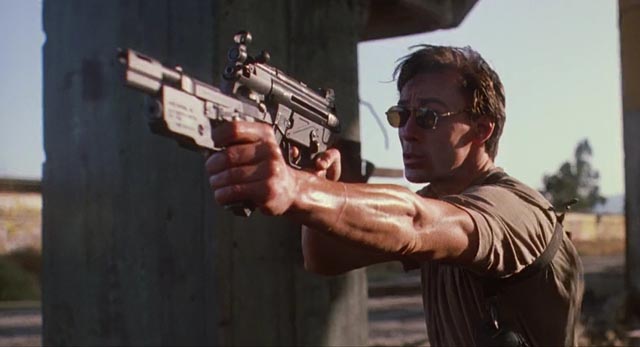
Nemesis (Albert Pyun, 1992) &
Shadowbuilder (Jamie Dixon, 1998)
In the wake of appreciating MVD’s Abominable Blu-ray, I picked up a couple of their other releases. While neither movie is as good as Abominable, the disk presentations are impressive for fairly routine low-budget genre titles. Albert Pyun has toiled in low-budget exploitation for almost forty years, but little stands out in his fifty-odd movie filmography – his debut feature The Sword and the Sorcerer (1982) and the Van Damme hit Cyborg (1989) are probably his best-known movies, though I do have some affection for Dollman (1991). Nemesis (1992) is par for the course, a confused and confusing mix of action and sci-fi with obvious nods to Blade Runner, in which an LAPD hunter tracks down and destroys rebel androids determined to wipe out humans. We learn in the opening sequence that he’s mostly machine himself, but then it turns out that there are actually few real humans anywhere to be seen, so it’s internecine robot warfare on fairly well-chosen locations from industrial wastelands in California to lush Hawaiian landscapes. Apart from an incoherent script (by Rebecca Charles, whose only credits are three Nemesis movies), the biggest drawback is a charisma-free lead in Olivier Gruner, a former French Special Forces member and champion kickboxer with almost zero screen presence.
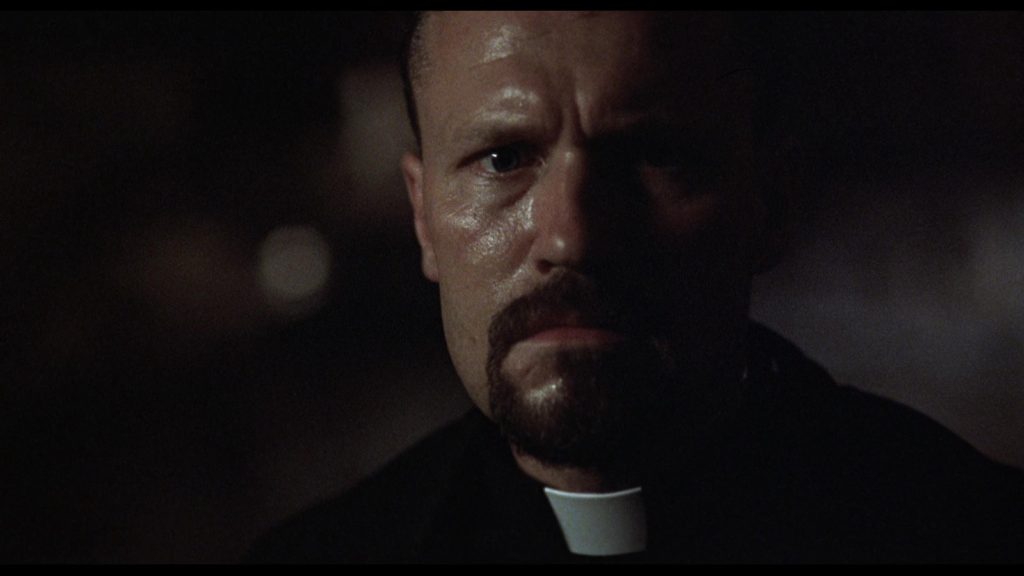
Somewhat better is Jamie Dixon’s Shadowbuilder – or rather Jamie Dixon’s Bram Stoker’s Shadowbuilder (1998). This starts with a bang as an occult group led by a renegade priest tries to summon a demon, only to be interrupted by a gun-toting demon-hunter priest played by none other than Michael Rooker. Unfortunately, he’s a bit too late and some part of the demon has entered our world. Father Vassey (Rooker), tired of his assassin-for-the-Church role, reluctantly heads for a small town where the demon is determined to possess a boy whose soul is pure, thereby opening a gateway to Hell – or something. In the early stages, when the demon is a mere shadow congealing from fragments of darkness, the movie achieves some genuinely creepy moments … but as it gains strength and takes on increasingly solid form, the production’s resources aren’t up to the job and it looks more and more like a videogame avatar from the period. Rooker is entertaining as he appears to be taking it all seriously, and Tony Todd chews the scenery in a peripheral role.
Both disks are loaded with extras. Shadowbuilder has three featurettes and a commentary, while MVD lavish two disks on Nemesis, with an impressive HD transfer of the feature on Blu-ray, along with interviews with Pyun and producer Eric Karson. On a supplementary DVD, we get multiple featurettes and interviews, plus an SD copy of Pyun’s director’s cut (I didn’t watch this, so can’t say what the differences are). Strangely, MVD have included this same SD director’s cut as a supplement on the Blu-ray with a Pyun commentary replacing the movie’s soundtrack. Seems like an odd waste of resources when they could have just put the commentary on the DVD copy …
*
Exploitation from Code Red
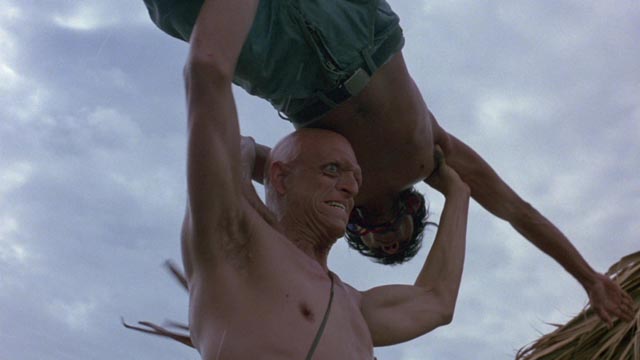
Five years after unleashing Cannibal Holocaust (1980) on the world, Ruggero Deodato returned to the jungle – and a number of plot elements and themes – for Cut and Run (1985). Once again an American media team heads to South America and encounters horror and violence – this time it’s a network television news crew looking for their boss’ missing son who has run afoul of a drug cartel/millennial cult led by a survivor of Jonestown (the always reliable Richard Lynch). His army of mercenaries and “savages” are slaughtering all his rivals in the drug trade. The crew, headed by ambitious reporter Fran Hudson (Lisa Blount), are beaming their adventures back to the newsroom which means the increasing violence is boosting ratings. But while Deodato handles all the mayhem efficiently, Cut and Run remains superficial, failing to duplicate the disturbing power of Cannibal Holocaust. Apparently Deodato took over from Wes Craven, who was scouting a movie in Colombia (perhaps explaining the presence of Michael Berryman as one of the cult leader’s henchmen). The cast is good, though, and Claudio Simonetti delivers another excellent score. The disk features two different cuts – R and unrated – and almost two hours of interviews with Deodato and actors John Steiner, Leonard Mann and Willie Aames.
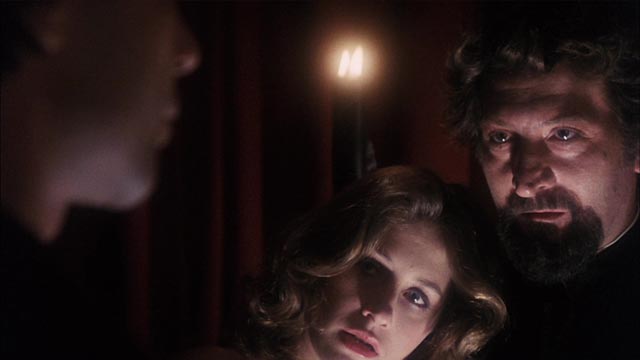
Spaniard José Ramón Larraz was also past the peak of his Anglophile sex-and-horror days by the time he made Black Candles (1982) almost a decade after Vampyres and Symptoms (both 1974). Those films were moody and atmospheric, balancing their various exploitation elements well. That balance is gone in Black Candles, a vague occult story which is continually brought to a standstill by lengthy and boring softcore sex scenes. Carol (Vanessa Hidalgo) returns to England with her husband Robert (Jeffrey Healey) when her brother Andrew dies mysteriously. Robert’s widow Fiona (Helga Liné) is mixed up in Black Magic shenanigans and seduces Robert into the group … and that’s about it. The movie is sluggish and unfocused, suggesting that Larraz wasn’t sure what market he was aiming for. The disk image is decent; no extras.
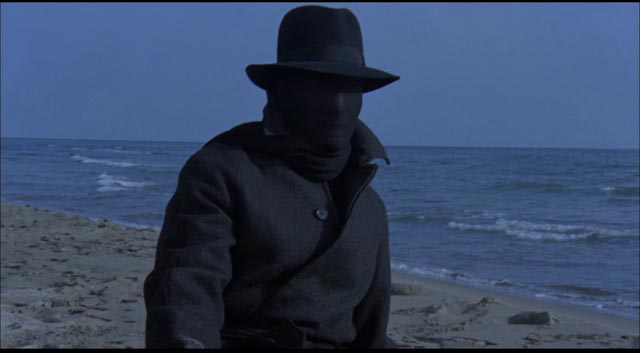
Roberto Bianchi Montero’s So Sweet, So Dead (1972, packaged as The Slasher) illustrates how quickly the giallo devolved into blatant exploitation. Lots of nudity and violence and misogyny delivered efficiently but without the stylistic flourishes of Bava or Argento – though the killer is blatantly borrowed from Bava’s Blood and Black Lace (1964), with the same coat, hat and stocking mask. Someone is killing the unfaithful wives of prominent men, leaving photographs of them with their lovers scattered around the bodies. Inspector Capuana (Farley Granger!) is trying to put a stop to the killing spree, but has been ordered by his superiors not to question the husbands – to save them embarrassment. There’s an added distraction in his wife Barbara (Sylva Koscina), who is herself involved with other men, making her a potential target. Code Red’s transfer of the English-dubbed version isn’t bad, but the disk lacks the extras which were included on Camera Obscura’s DVD edition (which included a commentary, interview with composer Giorgio Gaslini and the photo-novella version of the movie).
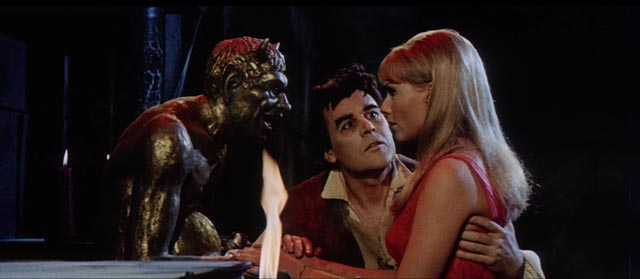
The Code Red title I most enjoyed recently is a rather old-fashioned regional horror called The Witchmaker (1969), written and directed by William O. Brown (the second of only two credits from this maker of industrial films). This was the second low-budget feature produced by L.Q. Jones and Alvy Moore, who went on a few years later to the much better known A Boy and His Dog (1975). There have been a number of murders in the Louisiana swamps and a professor of paranormal studies (Alvy Moore) takes his students to a remote cabin to investigate. One of those students has family ties to the occult (Thordis Brandt) and the prof uses hypnosis on her to free her psychic powers. Turns out a warlock named Luther the Berserk is committing the murders, drinking blood and reconstituting a local coven by reviving dead witches. Despite the low budget, the movie is atmospheric and very colourful (it was shot in Technicolor). The print is a bit battered, but the transfer is good. Best of all, there’s a lengthy on-camera interview with L.Q. Jones and a commentary with Jones and cinematographer John Morrill. The latter has an amusing moment when Morrill, after moderator Bill Olsen leads Jones on a long digression about Sam Peckinpah’s drug and booze problems, tetchily cuts in to point out that they’re in the booth to talk about the movie he shot, not Peckinpah’s career. This came just as I’d reached the limits of my own patience with Olsen.
*
Shout! Factory
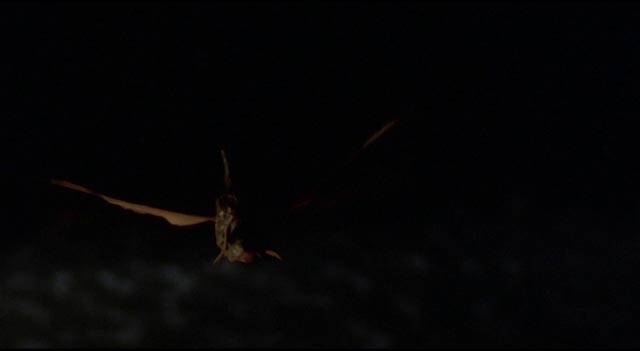
I can’t say I was disappointed with a couple of Shout! Factory releases from their Scream! Factory subdivision because I didn’t have particularly high expectations. Somehow I’d never actually seen James Cameron’s debut feature, Piranha II: The Spawning (1981), though I was well aware of its reputation. Still, it’s hard to believe he went from this to The Terminator (1984). Maybe it just goes to show the power of a good producer. On Piranha II, he was working with hack Ovidio G. Assonitis rather than Roger Corman, who produced the original Piranha and for whom Cameron had done design and effects work on a number of movies; while on The Terminator, he had Gale Ann Hurd. The only sign of Cameron’s personal presence in Piranha II is the extensive underwater action; here, he’s already more interested in exploring sunken wrecks than dealing with cliched characters on land. As for the flying killer fish, they’re amusingly cheesy but not scary – the sequel fails as both comedy and horror, with a very draggy first half before the fish really get to work. Apart from affording Cameron a chance to scuba dive with a camera, perhaps the movie is most significant for connecting the director with actor Lance Henriksen, who would be a distinctive presence in The Terminator and Aliens (1986). The disk’s HD transfer looks good and there are a couple of short interviews, with actor Ricky Paull Goldin and effects artist Brian Wade.
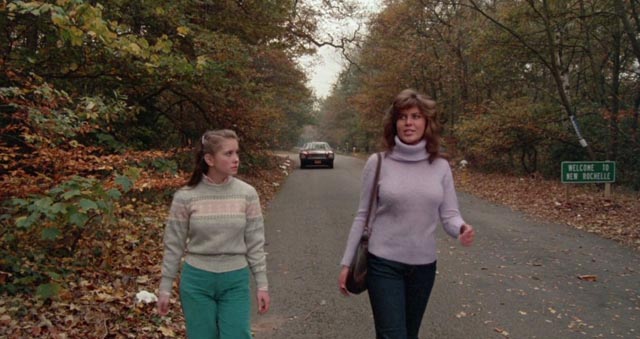
I was surprised to come across yet another previously unknown Michael Winner movie when I found a copy of Scream for Help (1984) in a local store. Written by Tom Holland just before he hit it big as a writer-director with Fright Night (1985) and Child’s Play (1988), it’s essentially The Stepfather three years before that Donald Westlake/Joseph Ruben hit. Teen Christie Cromwell (Rachael Kelly) is known for her overactive imagination, so when she starts saying that her stepfather Paul Fox (David Brooks) is planning to kill her wealthy mother Karen (Marie Masters), no one believes her. Her attempts to expose Paul put her and her friends in escalating danger … but Winner seems just to be going through the motions by this point in his career. The movie looks polished and professional, but nothing in it really rings true. It’s like a tossed off TV movie-of-the-week. Tom Holland complains at length in an interview on the disk about Winner being totally wrong for the project, lacking any feel for the building of Hitchcockian suspense and it’s impossible to disagree, but as written the situation is more pedestrian than Westlake’s script for Ruben’s film and Paul Fox is nowhere near as menacing a character as Terry O’Quinn’s Jerry Blake. The disk also includes an interview with actor David Brooks and a commentary from the slasher enthusiasts at the Hysteria Continues podcast.
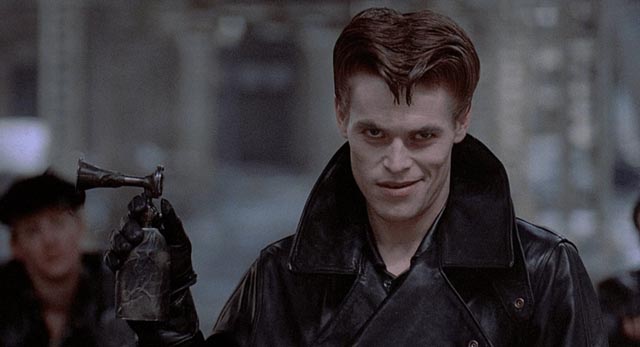
Although I have a copy of the region B Second Sight Blu-ray of Walter Hill’s Streets of Fire (1984), I picked up Shout! Factory’s two-disk steelbook edition, which includes the extras from Second Sight and adds a new feature-length doc about the film. I’ve always been a little ambivalent about this self-consciously stylized urban western rock musical in which style so outweighs substance that it leaves the viewer (well, this one at least) mostly at a detached distance, admiring the production design and Andrew Laszlo’s spectacularly colourful cinematography but unengaged by the thin story. Having escaped her old neighbourhood by becoming a rock star, Ellen Aim (Diane Lane) comes back to give a concert only to be kidnapped from the stage by a gang of bikers led by Raven Shaddock (a very young Willem Dafoe). Ellen’s bitter ex-boyfriend Tom Cody (Michael Paré) is summoned by his sister Reva (Deborah Van Valkenburgh) to come home and rescue the singer. Acquiring tough-girl sidekick McCoy (Amy Madigan), Tom heads across town to blow up the bikers’ hideout and bring Ellen home, leading to a mainstreet showdown in which Tom and Raven go at each other with sledgehammers while the crowd looks on. It’s a simple narrative played out on a terrific backlot set, steeped in rain and colour, and wrapped in a variety of musical styles overseen by Ry Cooder. Ellen’s opening and closing numbers were written and produced by Jim Steinman, giving her a big arena female Meatloaf sound, while in between action is punctuated by other performances, most impressively The Blasters belting out “One Bad Stud” and “Blue Shadows” at the bikers’ hangout. I love the visuals and the music is great, but I just wish the film had something more going on – although made five years later, it feels like a sketch for The Warriors (1979). The steelbook’s second disk contains two feature-length docs about the film, plus the original electronic press kit featurettes and a couple of music videos.
*
Two thrillers, two eras
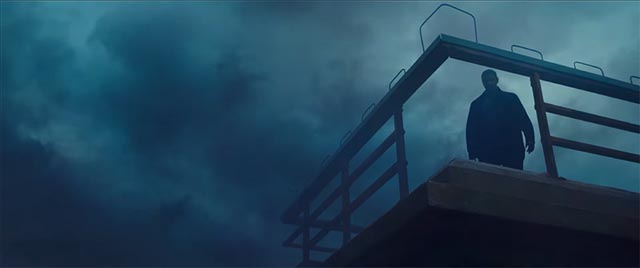
I have no doubt that age has something to do with it, not to mention having had my ideas about film formed in the 1960s and ’70s, but my response to a pair of thrillers separated by forty-five years and decades of production changes also has something to do with intrinsic qualities in their approaches to narrative. I liked the first Equalizer (2014) movie; it had a very well constructed script – every character and event eventually connects to everything else, all moving together towards a big action finale – and it had a conflicted protagonist who just wants to live a quiet life, yet has those legendary movie skills which he’s called on to use in aid of powerless characters placed in danger by various corrupt forces (crooked cops, Russian gangsters), and a vicious antagonist worthy of the effort. The sequel, The Equalizer 2 (2018), looks and sounds very much like the original, but the script simply doesn’t hold together; it’s a collection of characters and actions which seem random and ultimately pointless. Who hired the renegade agents to kill McCall (Denzel Washington)’s old friend in Paris? Why does this supposedly crack team run around the world slaughtering more and more people to cover up their previous slaughter? Why does the leader of the group, McCall’s old CIA buddy who was kicked out in disgrace, appear to still be inside the agency? Why does it all end on a storm-swept island with a lengthy stalk-and-kill operation which will leave a lot of bodies and evidence behind rather than finally concealing … whatever it is they’re trying to conceal? And why do each of the neighbourhood vignettes remain isolated from the rest of the narrative instead of being woven into it as they were in the first film? By the end, I had a distinct feeling that writer Richard Wenk had thrown a bunch of stuff together because the production company were demanding a sequel – it feels half-baked and incomplete. But director Antoine Fuqua gives it all the slick visual pizzazz he’s noted for, using flashy camerawork and a lot of noisy busyness in an unsuccessful attempt to paper over the script holes. As in things like the Transformers movies, spectacle and distracting camerawork and editing try to give an impression that something is happening, but no one really cares about story, so despite all the surface movement it ends up feeling inert.
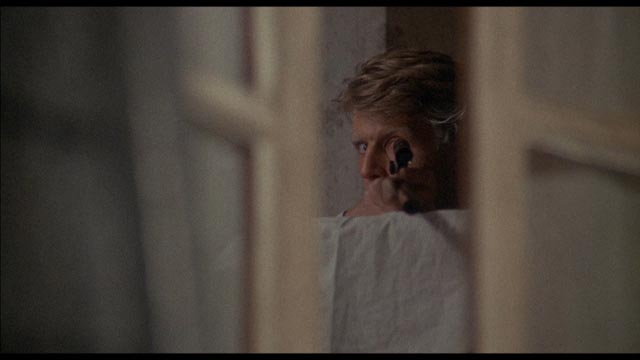
Fred Zinneman’s The Day of the Jackal (1973), adapted from Frederick Forsythe’s bestseller, is diametrically the opposite. A movie devoid of flash and focused entirely on telling its story, Jackal lays out its plot and the actions of its characters with meticulous care and a fascinated attention to detail. Any viewer with even a cursory knowledge of history knows how it will end, but that isn’t the point – it’s a film about all the steps and micro-decisions made along the way to that conclusion. Based on events from the summer of 1963, the movie (like the novel) begins with disaffected French officers, seeing Charles DeGaulle’s abandonment of Algeria as a betrayal, hiring an unnamed assassin to kill the President. These officers are under constant observation by the security forces, so the plan is quite quickly exposed – but no one knows the identity of the Jackal (Edward Fox), a nondescript chameleon-like man who moves freely from country to country under a series of disguises. But nonetheless, as the Jackal pieces together his plan, obtaining all the tools and weapons he needs from various specialists who have no mutual connections, a dogged, pedantic French policeman (Michael Lonsdale) pieces together little scraps of information, drawing closer and closer to the killer as he in turn draws closer to the President. Although we know DeGaulle wasn’t assassinated, the film generates steadily escalating tension up to the last-minute rush to stop the killer. Probably a modern audience would find the film’s deliberate pace and lack of big moments a bit of a bore … but it’s a masterful piece of storytelling which trusts viewers to be interested in the story for its own sake.
The Sony Columbia Pictures Blu-ray of The Equalizer 2 has a collection of deleted scenes and a number of featurettes in which everyone is self-congratulatory about the great work they’ve done. The Arrow Day of the Jackal Blu-ray features an excellent transfer, with a couple of short clips of the crew working on location and a 36-minute interview with film historian Neil Sinyard, plus a PDF of Kenneth Ross’ screenplay.
Comments